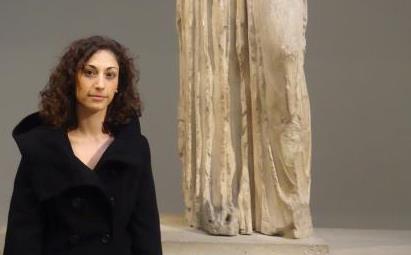
Antonia Georgiadou (MA Tourism Management, University of Westminster)
As a matter of fact, life appears to unfold through a series of events, which involve rituals and movements with a certain purpose and way of conduct, and depend on space and time to acquire meaning and fill us with memories. Travelling as an event during one’s lifetime encapsulates by definition the need to escape, explore, learn and remember…something different, unique and original. What is more, it said that the more intense the emotions of the traveller, the more genuine their experience.
My MA thesis entitled “Exploring Authenticity in Heritage Tourism: The Dialectic Between the Visitor, the Setting and the Experience at the New Acropolis Museum and at the British Museum” has aspired to foster the legitimacy of the New Acropolis Musem as the first better home to accommodate the artefacts from the Acropolis, predominately the Parthenon Sculptures. It took me precisely two (2) weeks to compile 100 questionnaires answered by visitors to the New Acropolis Museum, last June, whereas I barely managed to gather 50 at the British Museum carrying out my survey for another two (2) weeks, the following July. Of course, I still remain convinced that would I have been granted permission to just enter the British Museum courtyard-which I only found out later that constitutes “public space”-the target of the 100 samples would have been more surely reached. For this reason, I find it more appropriate to limit the discussion to the results of the first on-site survey, discarding the others for the sake of authenticity, which is what the whole research has sought for, after all.
About a year ago (summer 2013), people from 31 different countries aged between 18-69 years-old, 42 men and 57 women, were asked to fill in a questionnaire about their experience at the New Acropolis Museum on the day of their visit. Surprisingly, it occurred that more than half of them (i.e. 65 out of 100) had also visited the Parthenon (Duveen) Gallery at the British Museum. Their responses are quite enlightening. Most of them motivated purely by personal interest thought of the museum overall atmosphere as quite positive and lively during their tour, while they were also pleased with the exhibition design, particularly the ease of circulation, signage/directions, info on exhibits, position of artefacts, lighting, meaningful interconnection of the collection. According to their answers, the most helpful tools to comprehend the meaning of the exhibition were their own perception and individual interpretation, the labels as well as the atmosphere, in general.
Drawing on the psychological and socio-cultural aspect of the museum experience, it becomes evident that the visitor experience at the New Acropolis Museum showcases three (3) main affective states towards the exhibits: respect (72%), admiration (65%) and reflection (38%). On the other hand, guests upon their exit from the museum building admitted to have felt “satisfaction” (57%) followed by an equal share of “introspection” (24%), “pride” (23%), and “nostalgia” (22%). Last but not least, 78/100 visitors answered that the “location of the museum enhanced [their] experience” while 70/100 agreed that “the surrounding environment supports the character of the museum”. Finally, at the end of the questionnaire, interviewees were given room to provide freely their own feedback-either positive or negative-about their visit. The whole survey had no intention whatsoever to touch upon or challenge people’s opinion on the return of the so-called Elgin Marbles.
Returning the Parthenon Sculptures from the British Museum to the New Acropolis Museum had always been a subject for high culture discourse on the part of the elite, but also a communal vision of national identity for the Greek society. Decades of political confrontations and diplomatic negotiations have gone by without having achieved the desired effect yet. Personally, I have come to believe that the case is hardly ever going to be resolved. Paraphrasing the words of Melina Mercouri, I would advise that before arguing for their return we should all try to understand what the Parthenon Marbles mean to the rest of world, to each and every tourist who visits the Acropolis-not just the New Museum. Thus, it should not be all about having them back, but, instead, it should all be about ensuring that they are being taken good care of so as to be able to instil into their viewers the same sentiments and sensibility, until the day of them coming home…

Comments powered by CComment